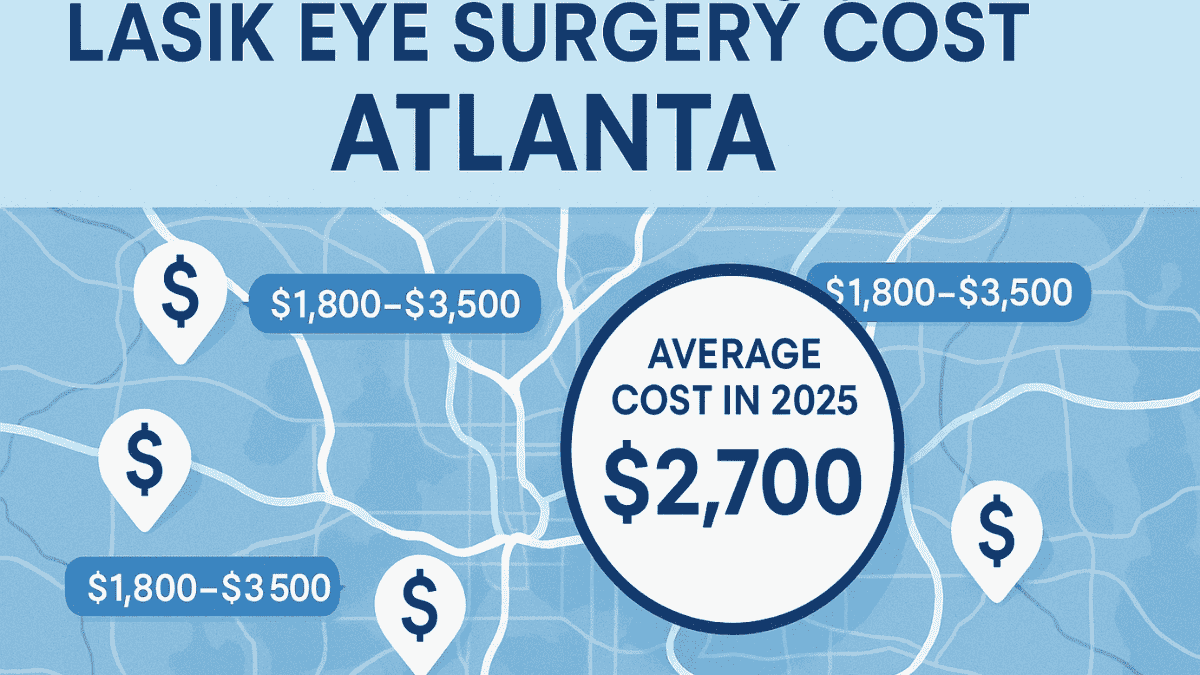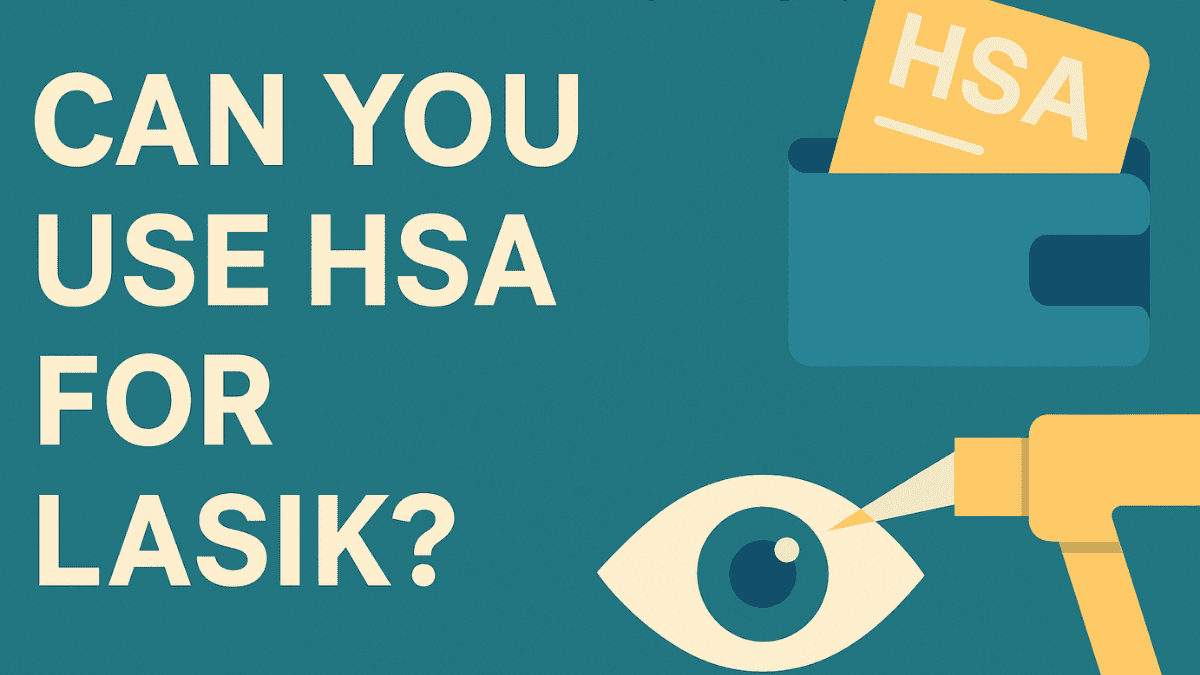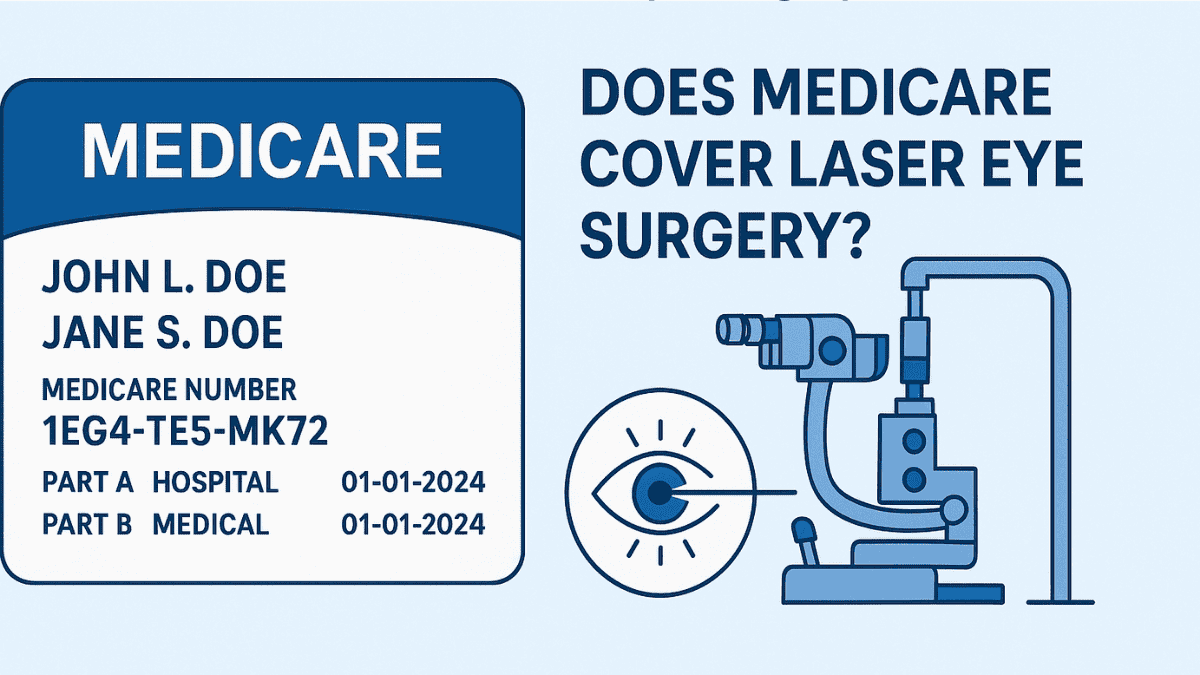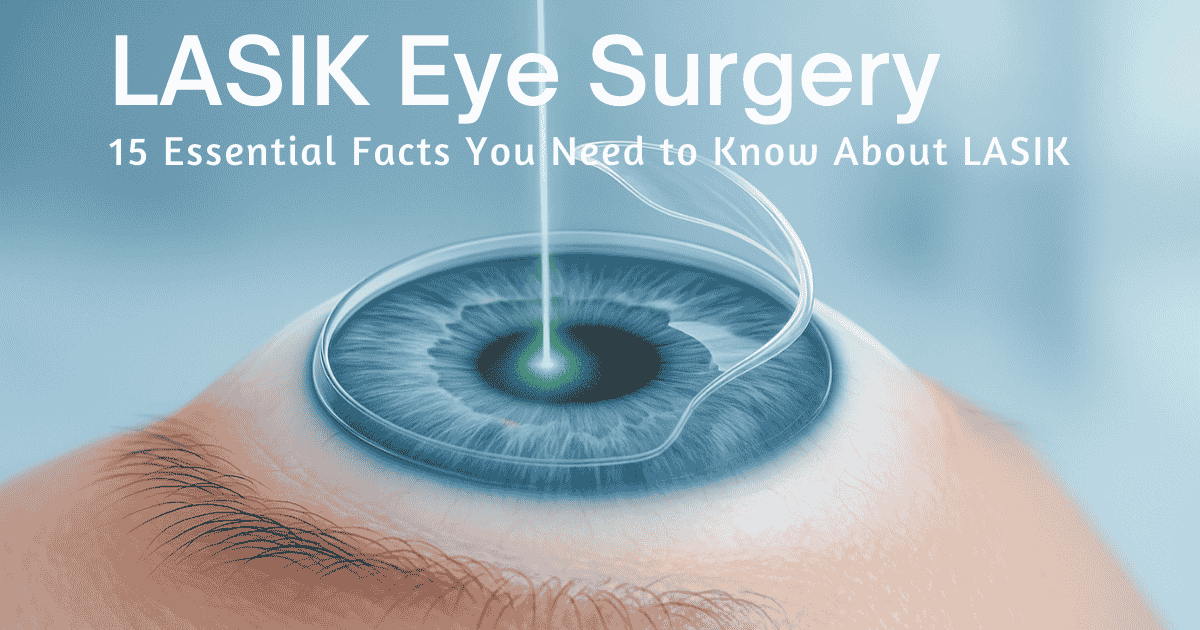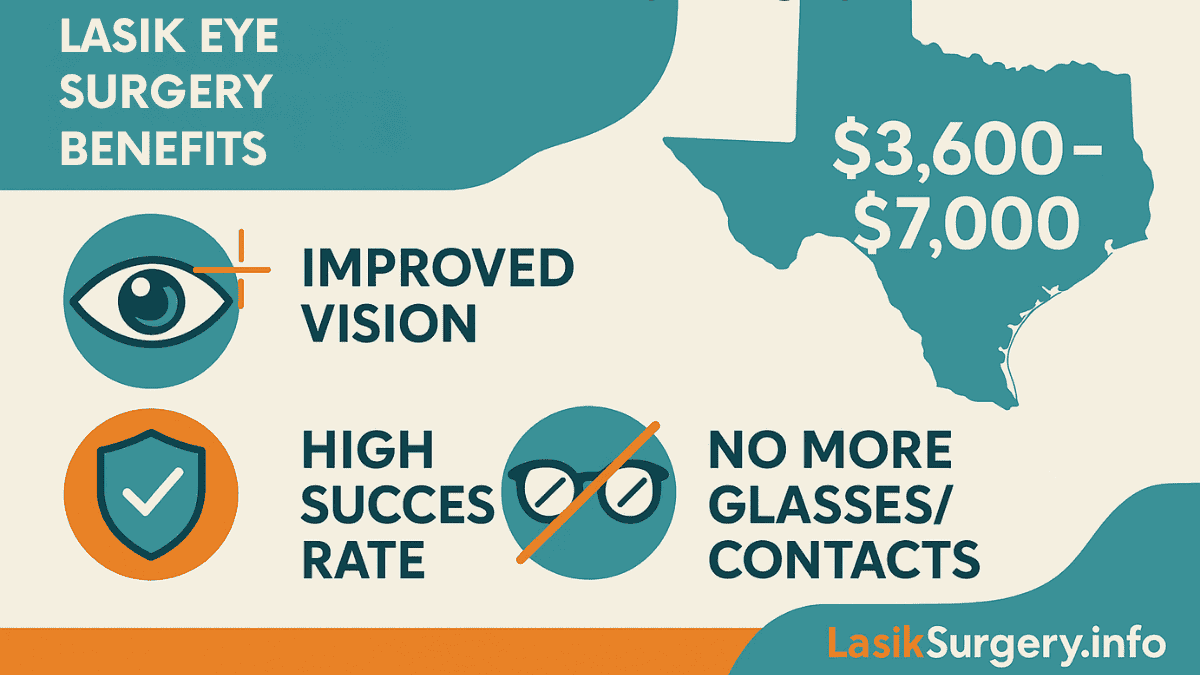
Thinking about getting LASIK eye surgery? You’re probably wondering about how much is LASIK eye surgery in Texas. It’s a significant question for many Texans aiming for clearer vision without the daily hassle of prescription glasses or contact lenses. You’ll learn that the price isn’t just one simple number because many things can change it, and understanding these variables is important for your decision-making process. Knowing about how much is LASIK eye surgery in Texas helps you plan and choose what’s best for you and your vision correction goals.
Table of Contents
Average LASIK Cost in Texas (2025)
So, what’s the typical LASIK cost for this vision correction procedure in the Lone Star State? Generally, you might see prices ranging from $1,800 to over $3,500 per eye. This means for both eyes, the total could be anywhere from $3,600 to $7,000, or even more, making the average cost quite variable. The type of technology used at the eye center really shapes the final bill and overall LASIK price.
Older, blade-based LASIK (often called traditional LASIK) is usually on the lower end of that price scale. Newer methods like bladeless LASIK (using a femtosecond laser) or advanced Wavefront-guided LASIK, which creates a very precise map of your eye, cost more due to the sophisticated equipment and software involved. Procedures like SMILE, another less invasive laser eye surgery, also tend to be in the higher price bracket. Many people find the investment in laser vision correction to be a worthwhile investment in the long term.
If you want to understand the basics, learning What is LASIK? can give you a good foundation. The starting age for LASIK is typically 18, but many surgeons prefer patients to be in their early to mid-twenties when their prescription has stabilized. The overall cost depends on numerous elements specific to your eye conditions and the chosen LASIK procedure.
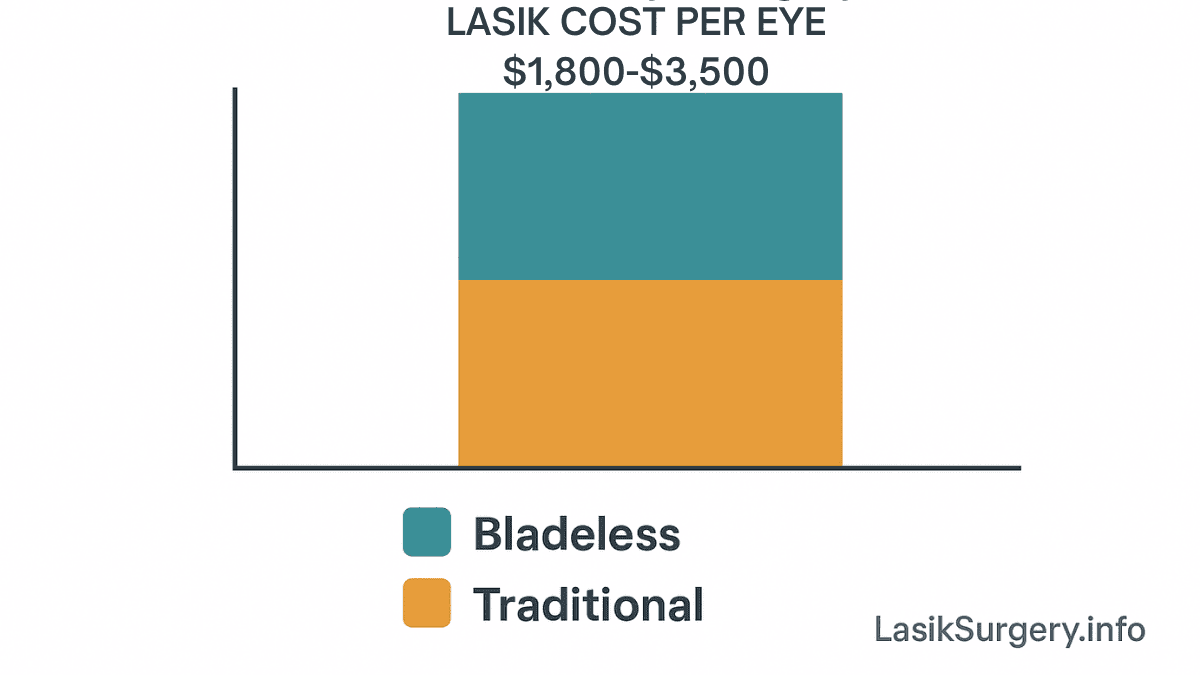
Factors That Change How Much is LASIK Eye Surgery in Texas
Several important things determine the final cost of your LASIK surgery in Texas. It’s not just a one-size-fits-all price, as many factors affect the final amount. Knowing these factors helps you understand why quotes can vary so much between different LASIK providers and why some centers advertise low-cost LASIK that might have hidden fees.
Your Location in Texas
Where you get your surgery done in Texas matters quite a bit. Big cities like Houston, Dallas/Fort Worth, Austin, and San Antonio often have more competition among clinics. This might lead to some competitive pricing or periodic LASIK deals, but also higher overhead costs for those clinics, which can push prices up.
Clinics in smaller towns or less populated areas might have different cost structures. Sometimes, less competition can mean higher prices, or lower overhead could mean savings; however, access to the latest quality technology might be more limited. Researching options at a reputable Texas eye institute or clinic in various locations can provide clarity.
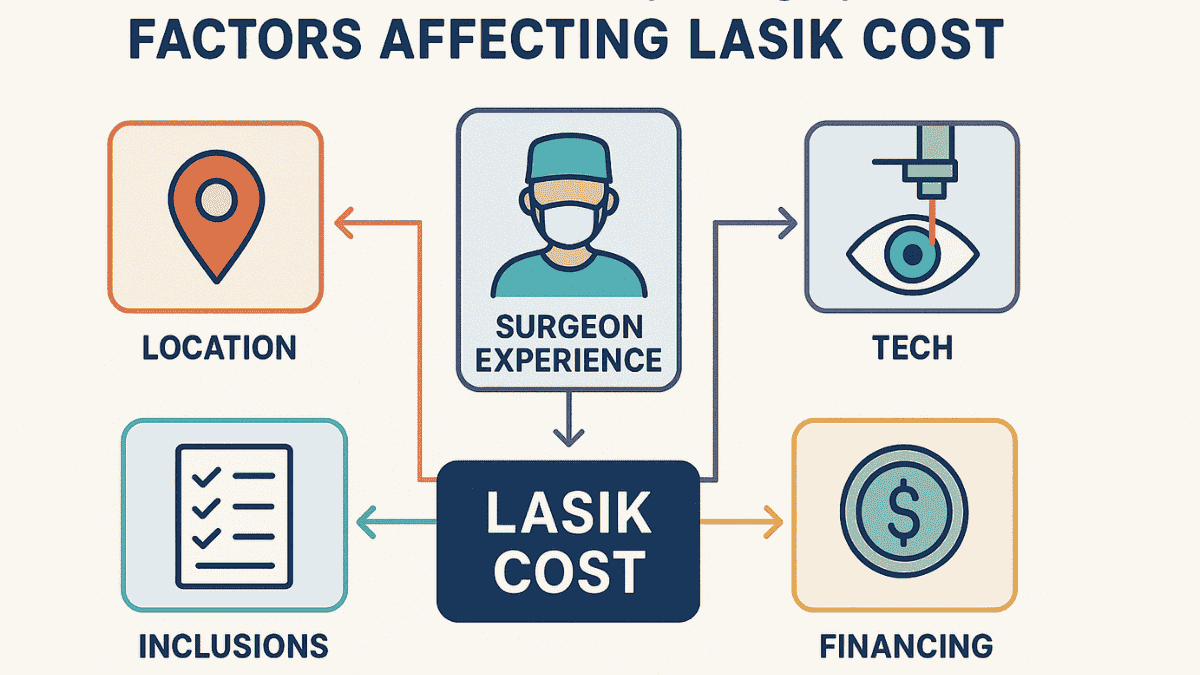
Surgeon’s Experience and Reputation
The skill and experience of your LASIK surgeon are huge factors in the LASIK cost. A highly experienced surgeon with a track record of great results and a high success rate will likely charge more. You’re paying for their expertise and the lower risk that comes with extensive practice and specialized training.
Don’t just look for the cheapest option or an advertised affordable cost that seems too good to be true; your eyes are too important. A surgeon’s reputation is built on consistent outcomes and patient satisfaction, contributing to the overall surgery pricing. Many top surgeons have performed thousands of successful LASIK surgery procedures.
Technology and Equipment Used
As mentioned, the technology used during the surgery greatly affects the price. Clinics that invest in the latest, most advanced laser systems and diagnostic tools, often referred to as state-of-the-art technology, usually have higher fees. These technologies, like custom Wavefront LASIK or Contoura Vision, can offer more precise results and potentially quicker recovery times for LASIK patients.
They cost a lot for clinics to buy and maintain, which is reflected in the LASIK pricing. For example, femtosecond lasers for creating the corneal flap are more expensive than microkeratomes but are often preferred for their precision. Advanced technology allows for more personalized vision correction options.
What’s Included in the Price?
This is a big one when evaluating the cost LASIK presents. Some clinics offer an all-inclusive price. This might cover your initial consultation, the surgery itself, all eye pre-operative exams, and all post-operative care visits for a specified period.
It might also include any needed medications like prescription eye drops or even a touch-up enhancement procedure later if your vision changes. Other clinics might advertise a low base price or initial cost but then add charges for these individual items, leading to additional fees. Always ask for a detailed breakdown of what the quoted procedure fees cover to understand the true expense, including any potential eye surgery costs beyond the surgery itself.
Insurance and Financing Options
Most health insurance plans consider LASIK an elective procedure, so your insurance provider usually doesn’t cover it. However, some vision plans might offer a small discount or specific benefits for laser vision. Many clinics partner with financing companies like CareCredit or Alphaeon, which offer financing plans to help manage medical expenses.
These financing options let you pay for the surgery in monthly payments. Also, you can often use funds from a Health Savings Account (HSA) or Flexible Spending Account (FSA) to pay for LASIK with pre-tax dollars, which effectively reduces the overall cost. Using a flexible spending account or health savings account can lead to significant savings.
LASIK Price Comparison Table (by Example Clinic Type)
To give you an idea, here’s how prices might look. Remember, these are general examples. You need to get custom quotes from specific lasik providers.
| Clinic Type & Location Example | Typical Cost Per Eye (USD) | Common Features Included |
|---|---|---|
| Large Chain Clinic (e.g., Houston) | $1,900 – $2,500 | Often uses standard bladeless LASIK, includes some follow-up visits. Might offer limited lasik deals. |
| Boutique Eye Center (e.g., Austin) | $2,200 – $3,200 | May offer advanced Wavefront, more personalized care, potential enhancement policy. Focus on quality technology. |
| Surgeon-Owned Practice (e.g., Dallas) | $2,000 – $3,000 | Focus on surgeon experience, financing plans often available. Often uses advanced technology. |
| Regional Eye Center (e.g., San Antonio) | $1,800 – $2,800 | Mix of technologies, comprehensive care packages. May have more varied surgery pricing. |
These figures are just for illustration. Real prices will vary based on all the factors discussed earlier, including the specific laser eye surgery chosen and the extent of post-operative care included. Always confirm what’s part of the package before committing.
Regional LASIK Cost Breakdown in Texas
Let’s look a little closer at what you might expect for the average cost of LASIK in different parts of Texas. Costs can really shift from one city to another, affecting how much LASIK eye surgery in Texas will ultimately be for you.
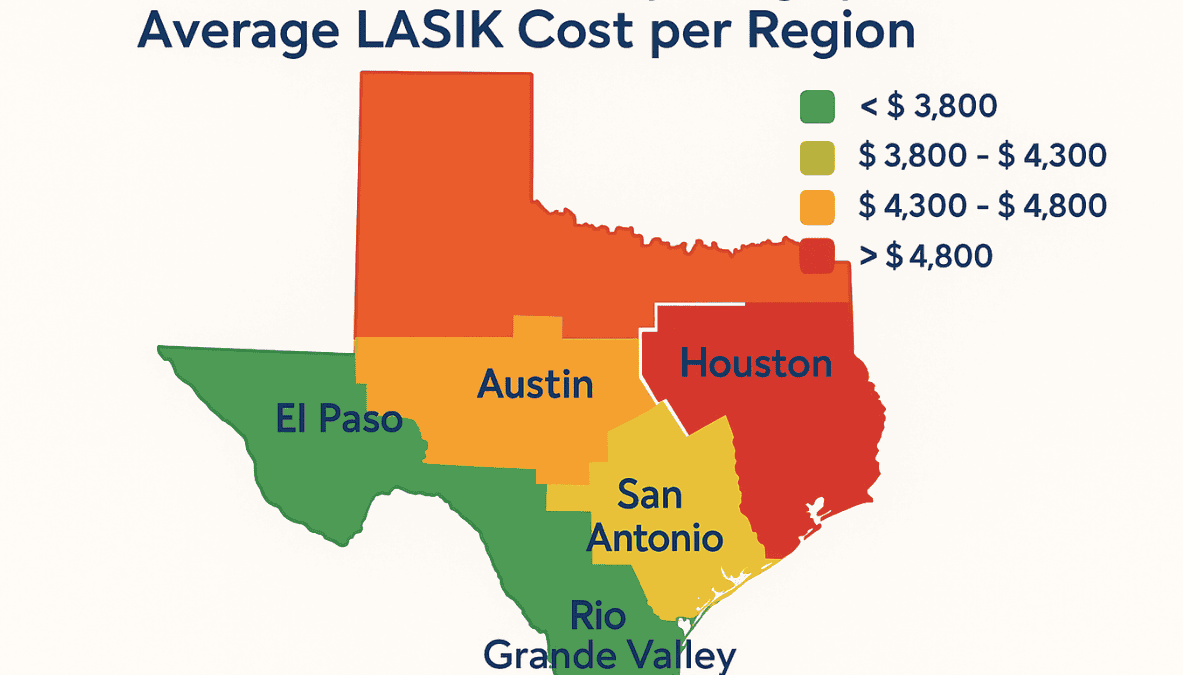
Houston Area Clinics
Houston is a massive city with many LASIK providers. You’ll find everything from national chains to private practices run by renowned surgeons. Average costs here might be around $2,000 to $2,800 per eye.
Because of the competition, look for special offers or LASIK deals, but always check what’s included in the LASIK price. The range of available vision correction options means thorough research is beneficial. Some centers may offer more affordable cost structures due to higher volume.
Dallas–Fort Worth Metroplex
The DFW area is similar to Houston in terms of having many options for laser vision correction. Prices often run from $1,900 to $2,900 per eye. You’ll see a wide range of technologies available, from standard to state-of-the-art technology.
Do your homework to compare surgeons and the specific lasers they use. Consider the long term benefits when evaluating the initial cost. Many LASIK providers here offer comprehensive packages.
Austin
Austin’s growing population and tech focus mean you’ll find modern clinics offering the latest laser eye surgery techniques. Costs might be a bit higher on average here, perhaps $2,100 to $3,200 per eye. This reflects the high demand and potentially higher operational costs in the city.
Many clinics focus on the latest advanced technology and custom procedures. It’s a good place to find effective LASIK surgery with cutting-edge equipment. Some may even offer alternatives like EVO ICL for patients who aren’t ideal LASIK candidates.
San Antonio & South Texas
In San Antonio, prices can range from $1,800 to $2,800 per eye. There’s a good mix of established clinics and newer facilities providing vision correction. For areas further south in Texas, you might find fewer providers, which could impact price, but travel to a larger city might be an option for more correction options.
These clinics often provide a balance between cost and access to experienced surgeons. A free consultation can help clarify the specific LASIK cost and what it entails.
Smaller Cities (e.g., El Paso, Corpus Christi)
In smaller Texas cities, you may find fewer LASIK centers. This could mean prices are less competitive, or conversely, lower overhead could result in slightly lower prices for the LASIK procedure. Expect costs possibly from $1,700 to $2,700 per eye.
It’s important to research the surgeon’s experience thoroughly, as options for specialized laser vision correction might be limited. Some patients might consider the travel to larger centers if specific technologies are desired.
Top-Rated Clinics and Surgeons in Texas
Finding a great clinic and surgeon is more important than just finding the lowest LASIK price. Look for board-certified ophthalmologists with specific experience in refractive surgery like LASIK. Check online reviews, but also ask for patient testimonials and look into the success rate of the LASIK surgeon.
In Houston, consider looking at clinics associated with major medical centers or long-standing eye institutes, sometimes known as a “Texas Eye” center. For example, some facilities are known for their advanced research and comprehensive eye care. Ask about the surgeons’ fellowship training in cornea and refractive surgery; this specialized training is a good indicator of expertise.
Dallas often boasts surgeons who are leaders in using new laser technologies. You might find clinics that specialize in all-laser LASIK and cater to LASIK patients with complex prescriptions. Look for practices that highlight surgeon credentials and publish their outcomes, which speaks to their confidence in providing effective LASIK surgery.
Austin’s clinics often appeal to a tech-savvy crowd. Search for centers that emphasize detailed pre-operative screenings (eye pre-screenings) and use the latest Wavefront or topography-guided lasers. Patient reviews often mention the quality of the consultation process here, which is important for understanding your vision correction options.
San Antonio has well-respected eye care centers with surgeons who have served the community for years. Check their experience with different types of LASIK and other vision correction procedures. Look for accreditations and surgeon involvement in professional organizations like the American Academy of Ophthalmology.
When evaluating any eye center, focus on surgeon experience, the quality technology they offer, and the thoroughness of their pre-op and post-op care. A good starting point for finding qualified surgeons is checking with professional organizations and scheduling a free consultation to discuss your specific needs. Many centers advertise their modern equipment and experienced staff.
Financing Your LASIK Surgery in Texas
Since LASIK is an investment, many people explore financing options. This can make the LASIK procedure much more accessible by breaking down the surgery costs into manageable amounts. Let’s look at common ways to pay for your laser eye surgery.
Many Texas LASIK clinics partner with third-party financing companies like CareCredit or Alphaeon Credit. These work like credit cards specifically for healthcare expenses or medical expenses. They often offer promotional periods with no interest if you pay the full amount within a certain time (like 6, 12, or 24 months), which can make the LASIK cost more affordable in the short term. Some people even use their major credit cards, though financing plans designed for healthcare may offer better terms.
If you don’t pay it off in time, interest can be high, so read the terms carefully. Another great option is using a Health Savings Account (HSA) or Flexible Spending Account (FSA), also known as a spending account. If your employer offers these, you contribute pre-tax dollars, meaning money from your health savings or flexible spending goes further. Using these funds for LASIK means you’re paying with dollars that haven’t been taxed, which effectively gives you a discount. This is an excellent way to use your savings account dedicated to health.
Plan ahead, as FSA funds usually have a “use it or lose it” rule each year. Some clinics might offer their own in-house payment plans or other financing options. These can vary a lot, so ask about interest rates and terms. Always get the financing details in writing before you agree.
Approval for most financing depends on your credit score. Consider a monthly payment scenario. If your surgery costs $4,000 for both eyes and you finance it over 24 months with no interest, that’s about $167 per month. This can be much more manageable than a large upfront payment, allowing more people to access this life-changing eye surgery. Many LASIK providers offer financing or can direct you to companies that do.
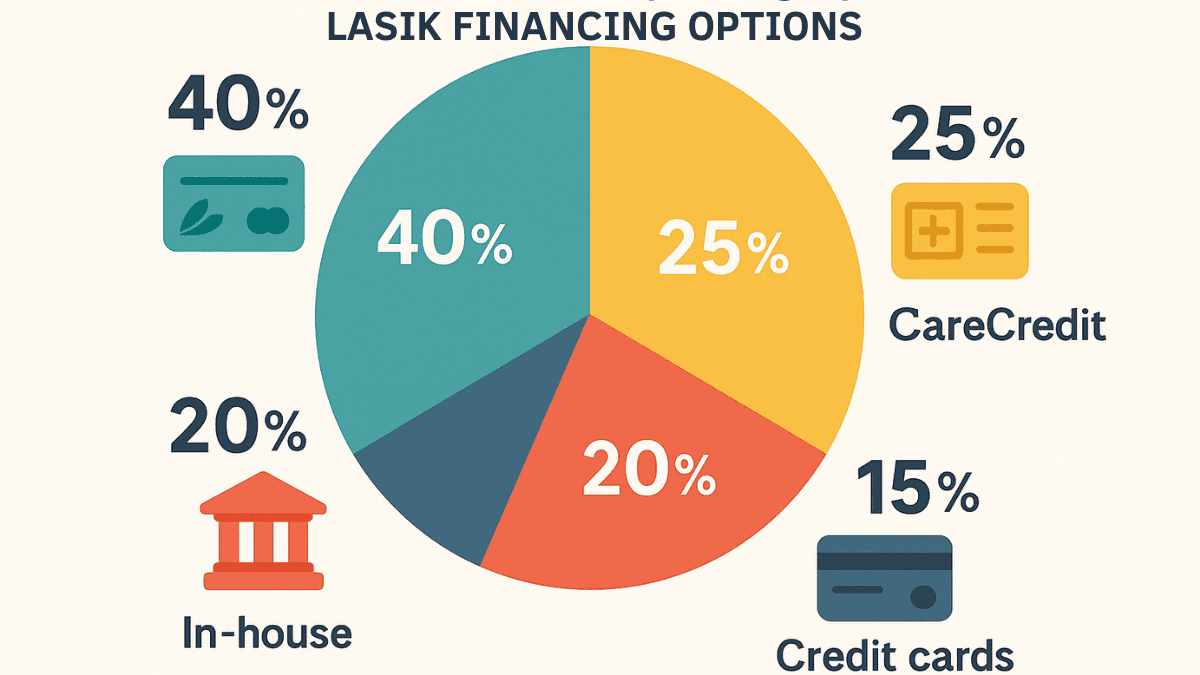
Is LASIK Worth It in Texas? A Look at Value
The upfront LASIK cost can seem high. But, it’s good to think about the long term value and whether it’s a worthwhile investment for you. How does it compare to a lifetime of glasses and contact lens expenses?
Think about how much you spend on prescription glasses, prescription sunglasses, contact lenses, and cleaning solutions each year. This can easily add up to hundreds, or even thousands, of dollars over ten or twenty years, especially with ongoing contacts purchased. For many, LASIK eye surgery pays for itself over time by eliminating these ongoing expenses, leading to significant long term savings.
A deeper look at whether Is LASIK Worth It? might help you decide. Patient satisfaction with LASIK is generally very high. Studies often show that over 90% of LASIK patients are happy with their results and would recommend the LASIK procedure. The freedom from glasses and contact lenses is a huge lifestyle benefit for many, allowing them to enjoy clear vision without daily aids.
Imagine waking up and seeing clearly, or swimming without worrying about losing a contact lens. These benefits go beyond just money and can greatly improve your quality of life. The initial cost might seem like a lot, but the investment often proves valuable for years to come.
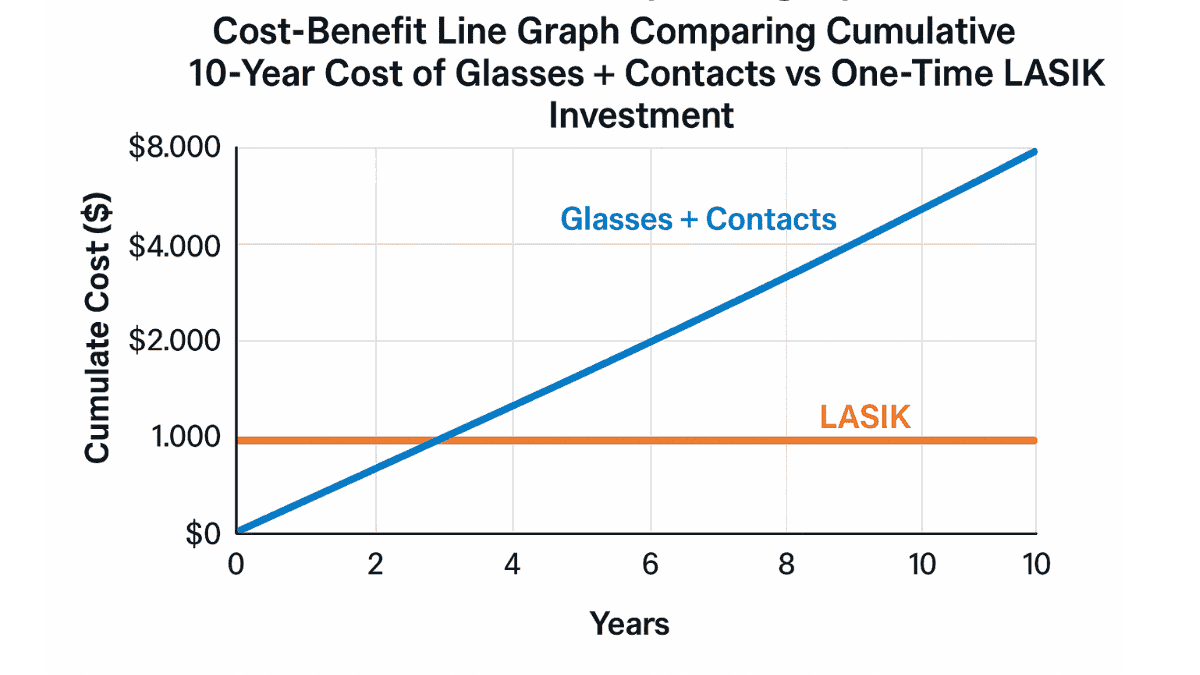
Real-World Cost Examples & Patient Experiences
Hearing about others’ experiences can be helpful when considering LASIK surgery. While individual results and surgery costs vary, here are some general scenarios reflecting the average cost and experiences:
Sarah, from Houston, paid $2,300 per eye for bladeless Wavefront LASIK at a well-known eye center. Her LASIK price included all follow-up visits for one year and a touch-up policy. She used her Health Savings Account (HSA) to pay for it and was thrilled to ditch her thick prescription glasses.
Mike, a teacher in a smaller Texas town, found a clinic offering LASIK for $1,800 per eye. This was for traditional LASIK. He had a few extra charges for medicated eye drops as part of his post-operative care. He financed it through the clinic and is happy with his improved vision for work, finding the cost LASIK involved to be manageable with financing.
Then there’s Maria from Dallas. She chose a premium LASIK surgeon and paid $3,100 per eye for advanced custom LASIK. Her cost included a lifetime enhancement guarantee. She felt the peace of mind was worth the extra expense for her laser vision correction.
You can often find Patient Stories & Reviews on clinic websites, though always read them with a discerning eye. Remember, sometimes there can be additional fees. For instance, if you have a very strong prescription or severe astigmatism, it might cost more. Ask about any potential extra costs during your free consultation to get an accurate LASIK pricing estimate.
How to Choose the Right LASIK Clinic in Texas
Selecting the right clinic and LASIK surgeon is the most important decision you’ll make in your journey towards clear vision. Price is a factor, but it shouldn’t be the only one. Here’s what to focus on when evaluating LASIK providers:
First, check the surgeon’s credentials. Are they board-certified by the American Board of Ophthalmology? Do they have fellowship training in corneal and refractive surgery? How many LASIK procedures have they performed? This experience is critical for effective LASIK surgery.
Ask about the technology. What kind of lasers do they use for the laser eye procedure? Is it current, quality technology? Different lasers have different capabilities. Understand their pre-operative screening process; your eye pre-assessment should be very thorough to make sure you’re a good candidate for LASIK or if LASIK alternatives like EVO ICL or cataract surgery (if applicable for older patients) might be better.
Rushing this step is a red flag. Inquire about the follow-up care and post-operative care. How many post-op visits are included? What happens if you need an enhancement or touch-up procedure later? Is there an extra cost for enhancements? A good eye center will have a clear policy and transparent surgery pricing.
Read reviews, but also try to get personal referrals if you can. And most importantly, feel comfortable with the surgeon and the clinic staff during your consultation. You should feel like your questions are answered completely and that they offer financing options if needed.
Here’s a quick checklist for your consultation:
- Accreditation of the clinic?
- Surgeon’s board certification and experience?
- What specific laser technology will be used for your eyes?
- Details of pre-op and post-op care?
- What’s the enhancement policy and any associated costs?
- Are all surgery costs and procedure fees clearly itemized?
- What is the clinic’s success rate?
Asking these questions helps you make an informed choice and understand the true cost LASIK entails. Many centers advertise their services, so diligence is key.
Legal & Regulatory Overview for LASIK in Texas
In Texas, LASIK surgeons must be licensed medical doctors (MDs or DOs) with specific training in ophthalmology and laser eye surgery. The Texas Medical Board oversees medical practice in the state. They have regulations to help protect patients undergoing procedures like LASIK eye surgery.
You can usually verify a doctor’s license and any disciplinary history on the Texas Medical Board website. National organizations also set standards. The American Academy of Ophthalmology (AAO) gives guidelines and ethical considerations for refractive surgery, including LASIK. While not regulatory, these are important professional standards for any LASIK surgeon.
The U.S. Food and Drug Administration (FDA) approves the laser devices used for LASIK. You can find information about approved lasers and patient risks on the FDA’s website. Good clinics will be transparent about their adherence to these standards and the state-of-the-art technology they use. This helps ensure you are receiving care from qualified LASIK providers.
Travel & Accommodation Tips If You’re Traveling for LASIK in Texas
Some people travel to find a specific LASIK surgeon or a better LASIK price for their vision correction. If you’re traveling for LASIK in Texas, plan ahead. Major airports serve the big cities: George Bush Intercontinental (IAH) and Hobby (HOU) for Houston, Dallas/Fort Worth International (DFW) and Love Field (DAL) for Dallas, Austin-Bergstrom International (AUS) for Austin, and San Antonio International (SAT) for San Antonio.
Many LASIK clinics are located near medical centers or in commercial areas with hotels nearby. Ask the eye center if they have arrangements or recommendations for hotels. You’ll need to stay at least one night for your first post-op checkup, possibly longer, as part of your post-operative care.
You won’t be able to drive yourself home after the LASIK surgery. Plan for someone to accompany you or arrange for a ride service. Consider parking if you’re driving to the clinic city. After the procedure, your vision will be blurry, and your eyes will be sensitive, so plan for a comfortable and easy trip back to your accommodation to begin your recovery.
Understanding Risks & What to Expect After LASIK
Like any surgery, LASIK has potential risks and side effects, though the success rate is generally high. Most are temporary and resolve over time. It’s important to have realistic expectations about the LASIK procedure and recovery.
Common side effects right after surgery include dry eye, light sensitivity, glare, or halos around lights, especially at night. Your surgeon will prescribe eye drops to help with healing and dryness; diligent use of these eye drops is crucial. Most people see a big improvement in their vision within 24–48 hours, but it can take a few weeks or even months for your vision to fully stabilize and achieve clear vision.
Less common, but more serious, risks can include infection, inflammation, or issues with the corneal flap. In rare cases, some LASIK patients might experience a worsening of vision or need an enhancement procedure if the initial correction isn’t perfect. Certain pre-existing eye conditions might increase risks or make you not a good candidate for LASIK, necessitating discussion of LASIK alternatives such as EVO ICL or PRK.
A good surgeon will discuss all these potential LASIK risks and side effects with you thoroughly during your free consultation. The cost associated with managing complications is something to ask about; though rare, it is important. Ensuring you are a good candidate is the first step towards effective LASIK surgery.
Your Decision-Making Checklist for LASIK
Making the choice to get LASIK eye surgery is a big step towards potentially gaining freedom from contact lenses and glasses. Here’s a simple checklist to guide you through the process:
- Get a comprehensive eye exam to see if you’re a good candidate and if your prescription is stable (relevant to starting age considerations).
- Research how much is LASIK eye surgery in Texas by getting quotes from several reputable clinics; compare not just the LASIK price but also the overall value.
- Compare not just price, but LASIK surgeon experience, the advanced technology used, and what’s included in the total surgery costs (e.g., post-operative care, eye drops).
- Ask detailed questions about their enhancement policy and any other potential additional fees or costs associated with different correction options.
- Explore financing options (like CareCredit, HSA, FSA using pre-tax dollars, or other financing plans) if needed and get pre-approval. Understand your monthly payments.
- Read and understand the informed consent documents completely before scheduling your LASIK procedure. This will detail the laser eye surgery process and potential outcomes.
Take your time with this decision. It’s about your vision and your well-being, and finding an affordable cost that doesn’t compromise quality is key.
Conclusion
Figuring out how much is LASIK eye surgery in Texas involves looking at many different things, from the specific laser vision correction technology to the surgeon’s expertise. Prices for the LASIK procedure vary a lot based on the technology, the surgeon’s skill, what’s included in the package (like post-operative care and eye drops), and even the city where you have it done. The average cost can fluctuate, but a worthwhile investment in your vision is often the result.
By understanding these points, exploring financing options such as a Flexible Spending Account or Health Savings Account, and doing your research on various LASIK providers, you can find a great option that fits your needs and budget. Remember, this is an investment in your sight and quality of life, potentially freeing you from the long term expense of contact lens wear and prescription glasses. Seeking a free consultation at a reputable eye center is an excellent first step towards achieving clear vision.
In 2025, LASIK in Texas typically ranges from $1,800 to $3,500 per eye, depending on technology and clinic.
Key factors include location, surgeon expertise, laser technology, included pre‑ and post‑op care, and financing options.
Yes, bladeless (femtosecond) LASIK usually costs more than traditional blade-based LASIK due to advanced equipment.
Yes, many Texas clinics partner with CareCredit or Alphaeon to offer interest-free financing for 6‑24 months.
Most health insurance plans consider LASIK elective and do not cover it, though some vision plans may offer discounts.
Over 10–20 years, many patients save thousands by eliminating glasses, contacts, and solution costs post‑LASIK.
Packages often include pre-op exams, the surgery itself, post-op visits, sometimes enhancements and medications.
Yes—big cities like Houston and Austin often cost more, while smaller towns may be cheaper but have fewer tech options.
Check surgeon credentials, tech used, included care, enhancement policy, patient reviews, and transparent pricing.
Many clinics include at least one free enhancement; confirm terms during consultation as costs vary.
Yes, using HSA or FSA lets you pay pre‑tax, reducing your actual cost.
Dry eye, glare, halos, and light sensitivity are common but typically temporary within weeks to months.
They should be board‑certified, fellowship‑trained in refractive surgery, and have a high procedure volume.
Yes, reputable Texas clinics use FDA-approved lasers like femtosecond and Wavefront-guided systems.
Big city clinics often have more tech options and competitive pricing, but local practices can offer personalized care.
Plan to stay at least one night for a post-op visit; some recommend two nights for recovery.
Yes, you’ll need someone to drive you home as vision will be blurry immediately after the procedure.
Yes, Texas clinics are regulated by the Texas Medical Board. Surgeons must be licensed ophthalmologists.
Minimum age is 18, but many surgeons prefer patients whose prescription has stabilized in their early‑mid 20s.
Advanced procedures or lasers may be needed, which can increase costs slightly. Discuss with your surgeon.


